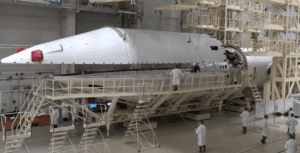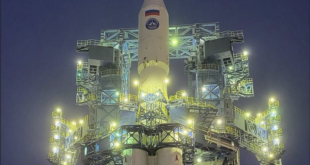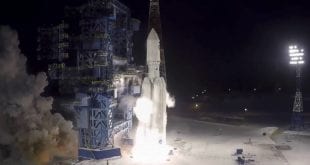
Edinburgh, 30 December 2021. – Russia launched its third successful demonstration flight of the Angara A5 rocket on Monday, however, its Persei upper stage suffered a failure, NASA Spaceflight reported. This was the final launch needed to enter operational status, although further tests might be needed prior to operations.
Angara A5 was launched to place a 2,400-kg mass simulator in a near geostationary orbit (GEO). A few hours later, the upper stage should have performed two burns to deliver the payload into a graveyard orbit. However, the Persei upper stage could only reach an initial low Earth parking orbit due to an engine failure.
The development of the fully Russian-designed and launched rocket started in 1992. The first launch took place 22 years later with an Angara 1.2pp. The same year, heavy lift variant Angara A5 had its first launch as well, carrying a mass simulator into GEO.
Angara is developed and built by the Khrunichev State Research and Production Space Center, aiming to replace several existing rockets. The next flight is scheduled for January, when an Angara 1.2 will launch a radar satellite to sun synchronous orbit for the Russian Aerospace Forces. There is one more flight scheduled for Angara 1.2 and one for Angara A5 in 2022.
 SpaceWatch.Global An independent perspective on space
SpaceWatch.Global An independent perspective on space




